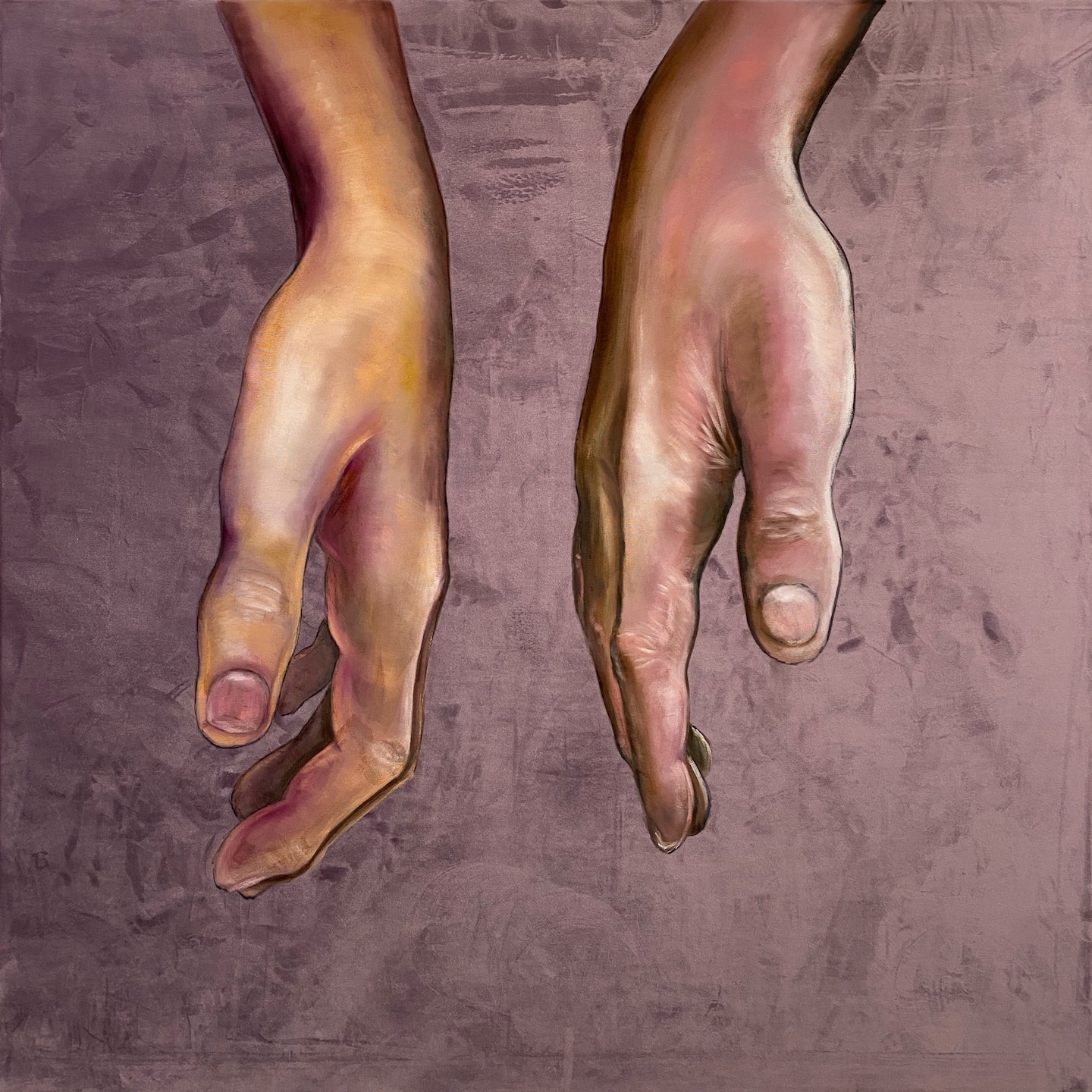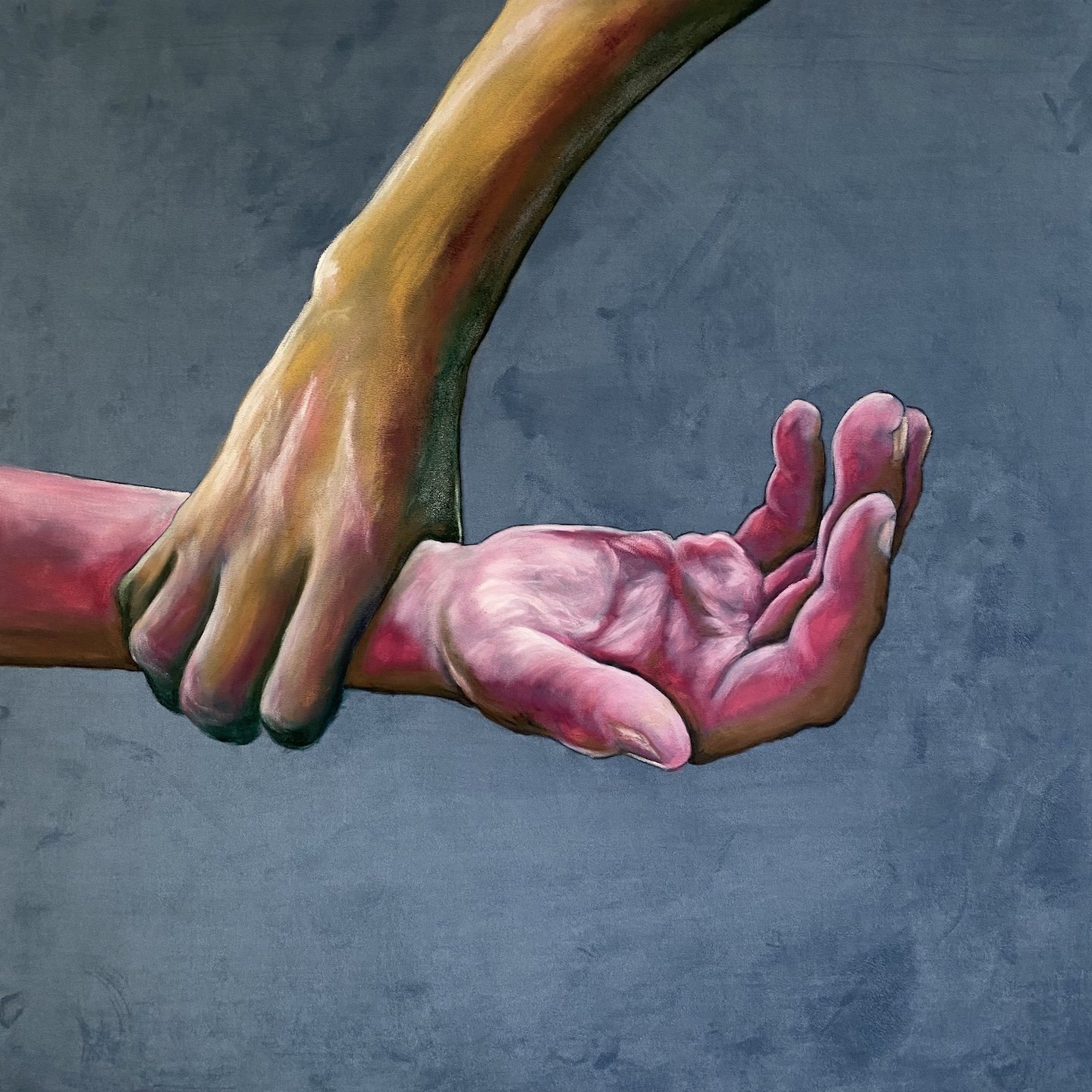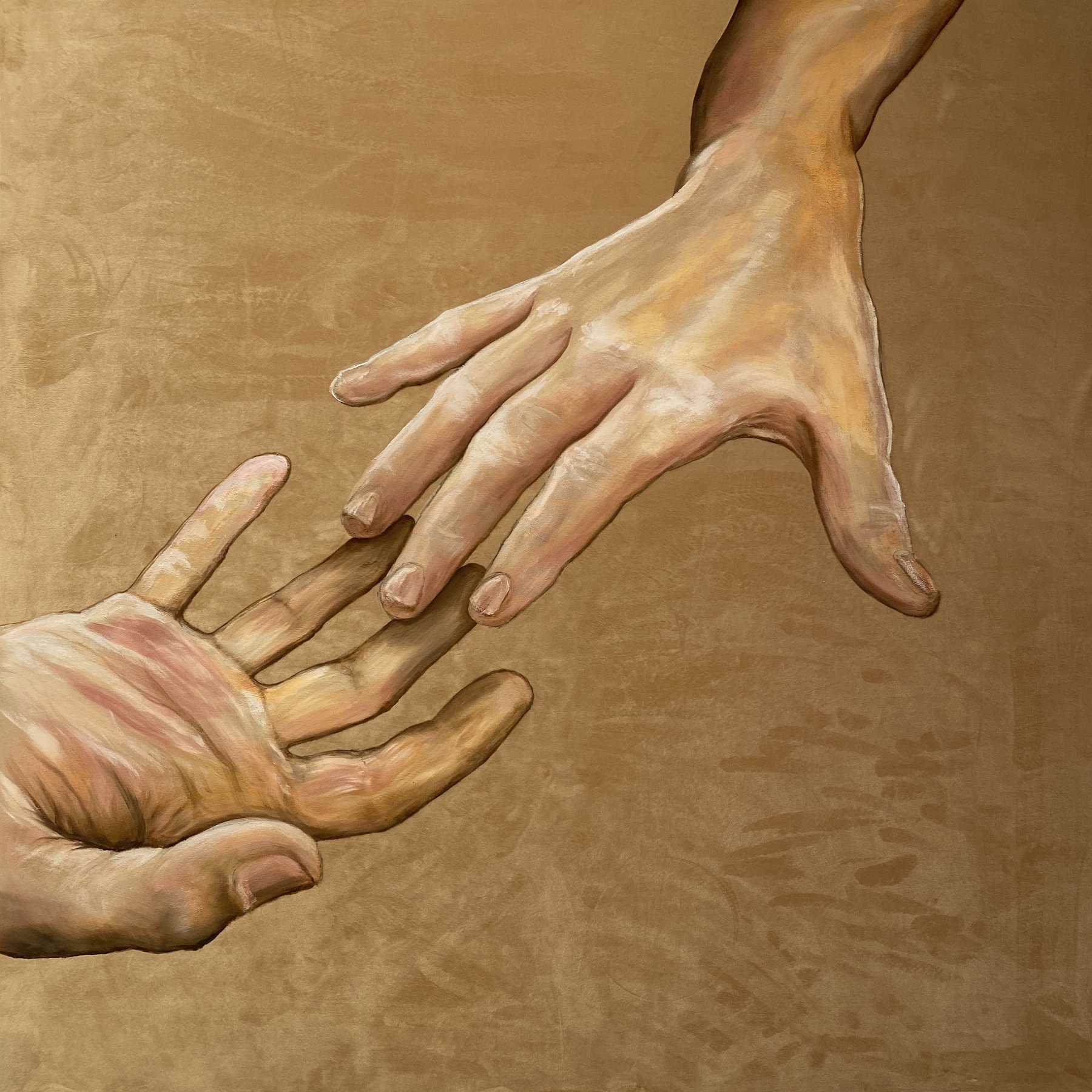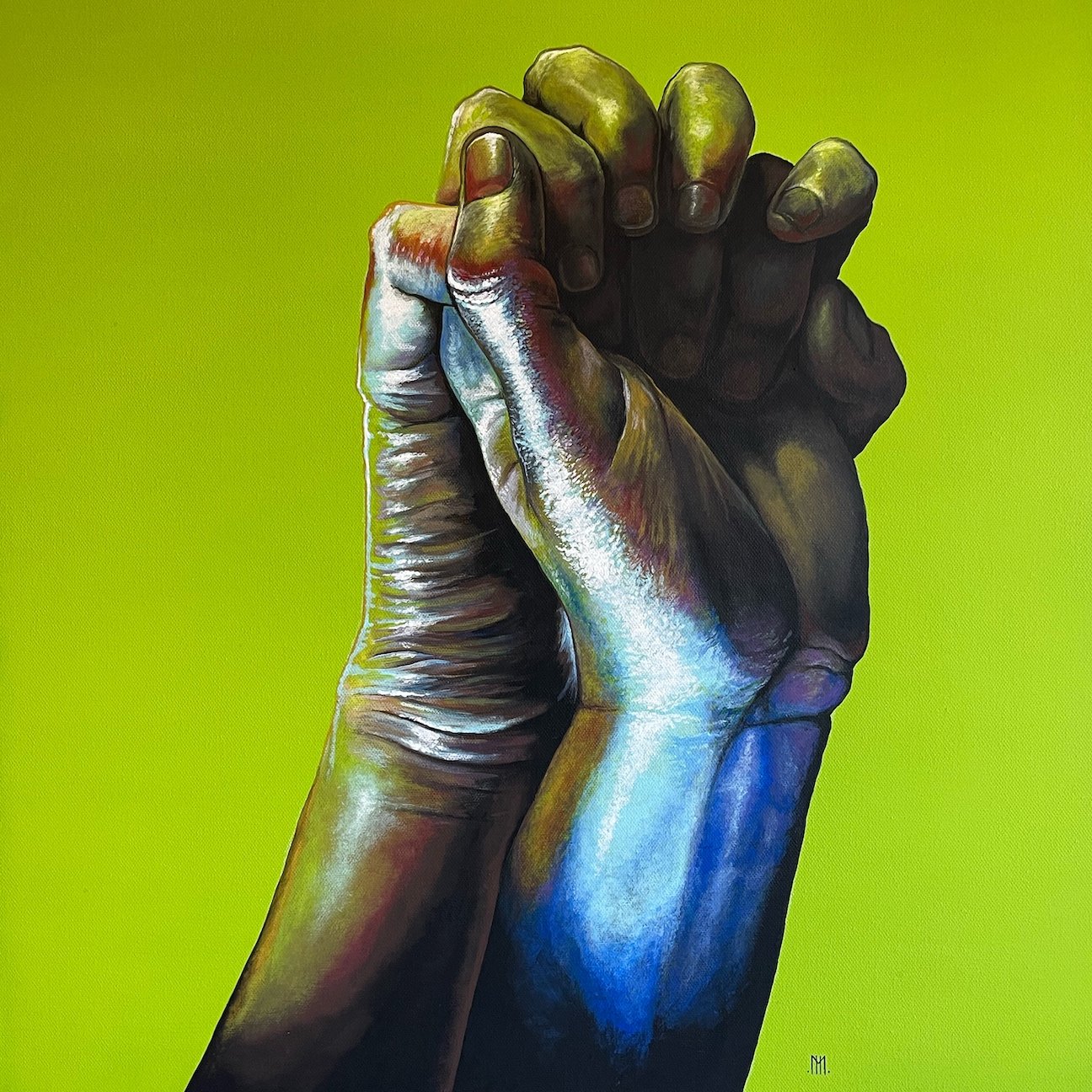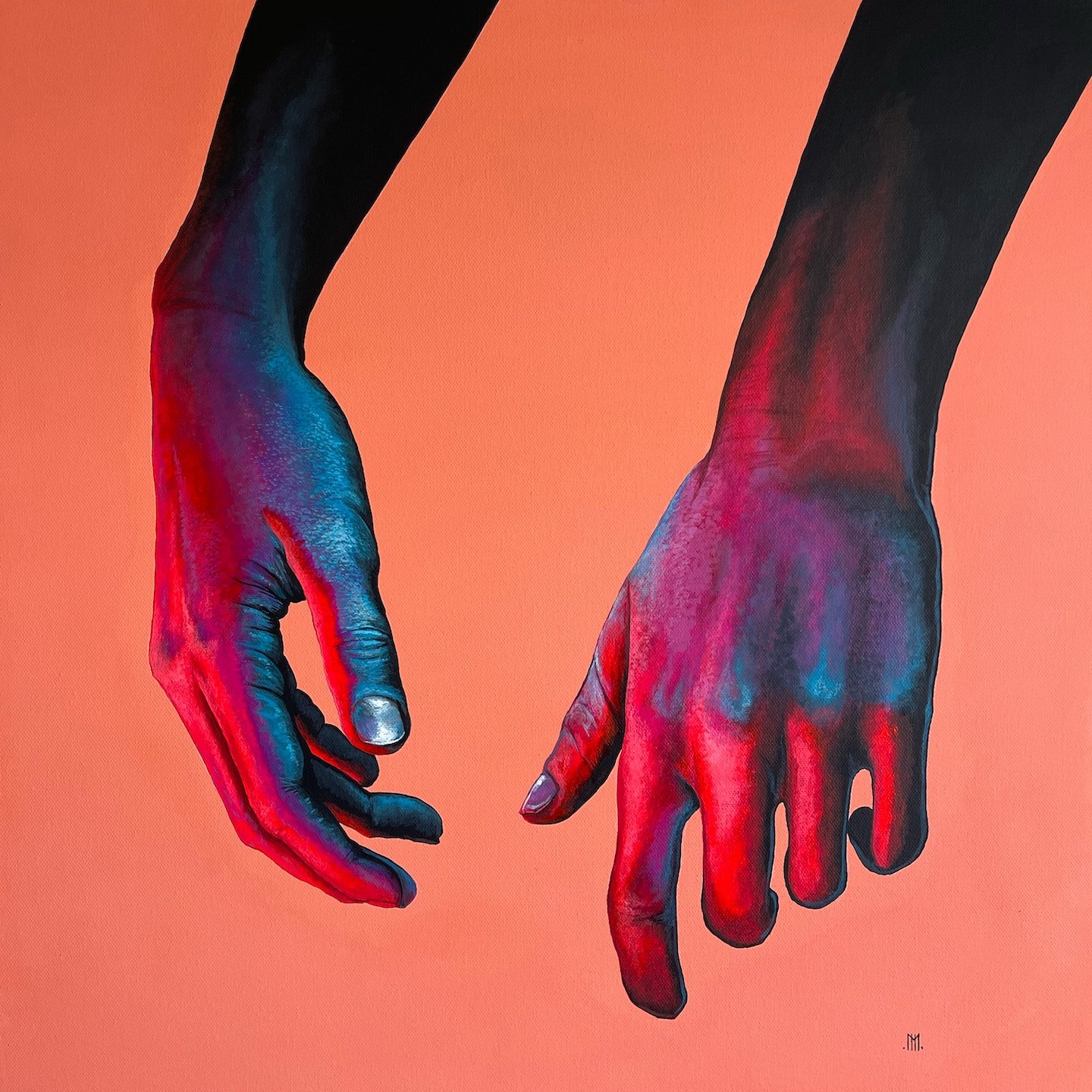Interview with artist Mason Holcomb
Mason Holcomb is an artist, designer and curator living in Fayetteville, Arkansas. But it was growing up in small town Alabama that really shaped what his art is today – a deeply personal journey. More of Mason’s work can be found at Art Ventures in Fayetteville and at his website.
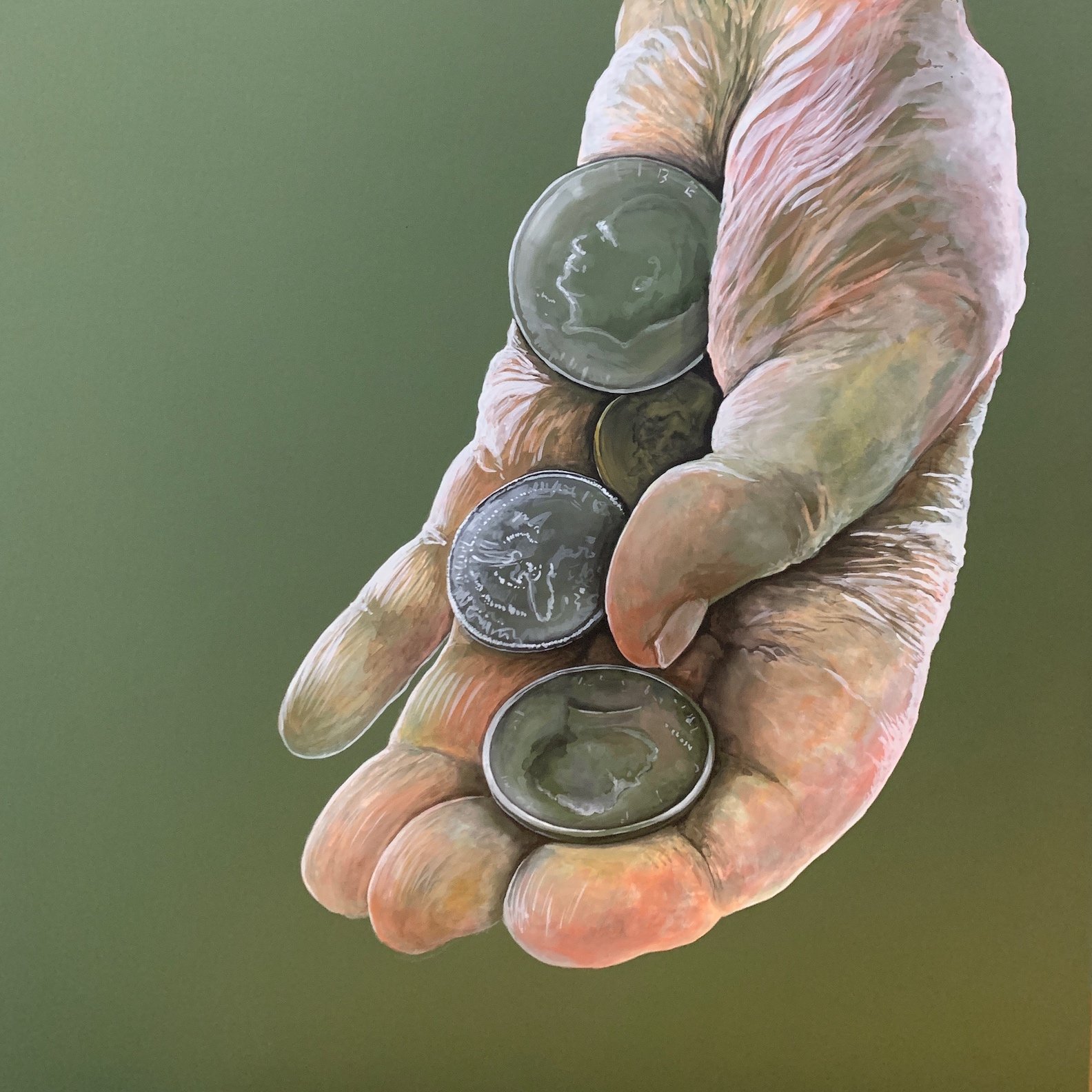

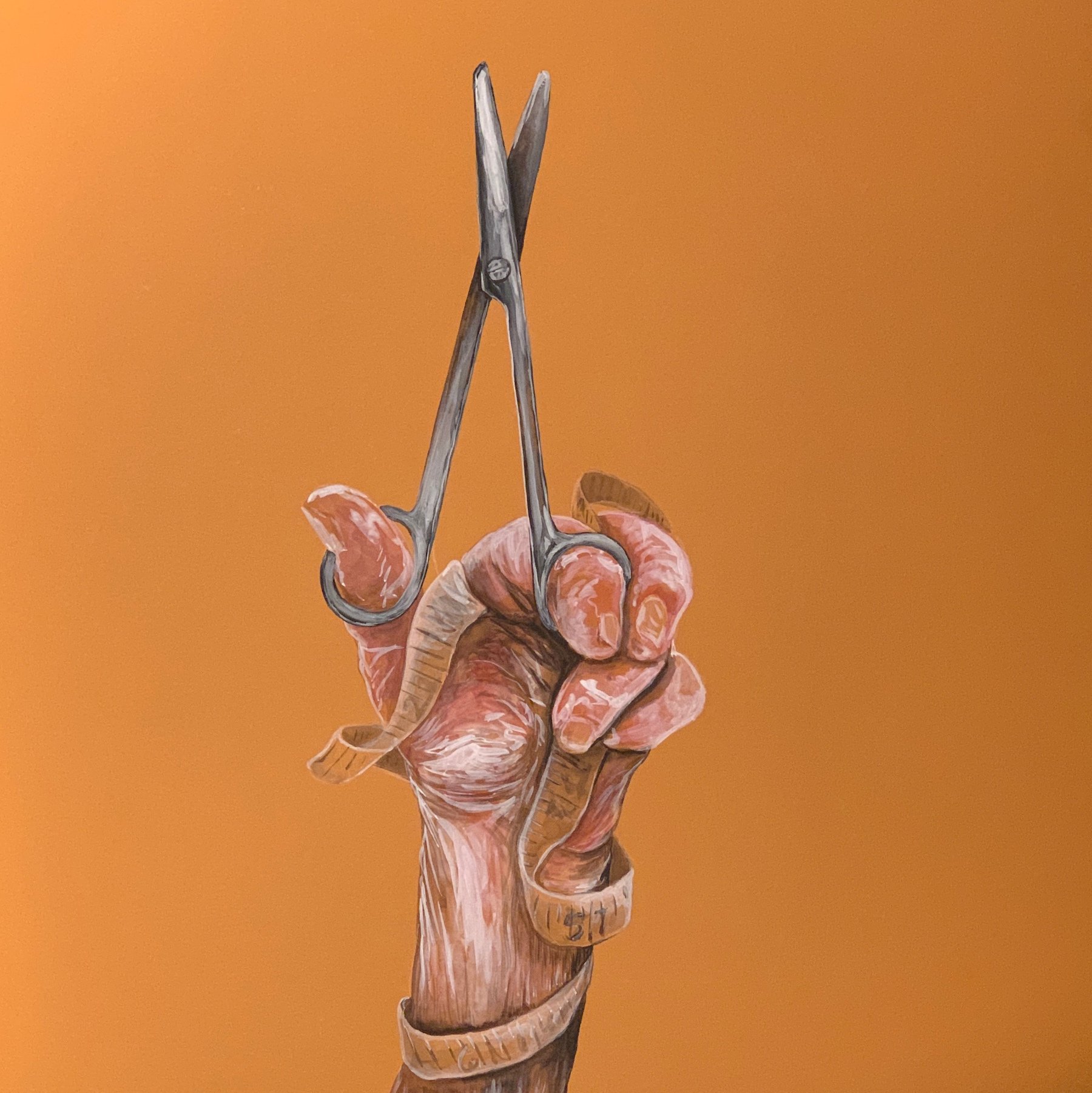
AAS: Mason, where did you grow up?
MH: I was born in Birmingham, Alabama, but most of my childhood was spent in Guntersville, Alabama, a lake-town in the northeast part of the state. Guntersville is a picturesque location with its beautiful lake and surrounding mountains.
After completing high school, I chose an education path that some might overlook: a two-year community college followed by a four-year institution. This experience made me a staunch advocate for community colleges.
During my academic journey, I pursued a passion for art, earning both my Associate and Bachelor of Fine Arts degrees. However, my practical education in the arts began early when I landed a job as administrative assistant for a local nonprofit art gallery known as MVAC right after high school. Little did I know that this position would quickly evolve, and within nine months, I was promoted to Executive Director, responsible for overseeing all daily operations of the organization.
As I finished my BFA, I decided to take a different path and started teaching art in a public elementary school. The pandemic brought uncertainty to all of our lives, prompting me to reassess my career aspirations. It became clear that my true passion lay back in art curation, and I yearned to return to that world.
I found myself irresistibly drawn to Northwest Arkansas and the region's vibrant economy and unwavering dedication to the arts. As I delved deeper into the area through personal connections and the widespread acclaim it had garnered on a national level, I quickly became aware of its thriving artistic community.
AAS: What do you think it was about your childhood that nurtured what would become your desire to promote art in the communities you have lived in?
MH: Growing up as the middle son in a family of athletes, with my older brother coaching high school football and my younger brother excelling in college golf, sports seemed to surround me. Despite my towering 6-foot-7-inch frame, which often drew attention, my heart always gravitated towards art, thanks in no small part to the unwavering support of my parents.
My mother, a dedicated teacher in her own right, played a pivotal role in nurturing my artistic pursuits. From the early days of crayon doodles to the more refined works I create now, she has been my constant and most valuable critic. Her constructive feedback has helped me refine my skills and evolve as an artist. I'm grateful for her guiding voice that continues to push me towards excellence. My father, too, had a profound impact on shaping my artistic journey. He instilled in me the idea of always striving to be the best at what I do, no matter the field. While he might not have been an artist himself, his belief in the power of dedication and determination fueled my drive to improve constantly.
While sports didn't capture my passion, I did discover a love for drawing fueled by my desire for competition. This drive intensified when I had a remarkable high school art teacher with an impressive track record of student awards. Her advanced art class regularly excelled in congressional and statewide competitions, garnering public praise and essential funding for the arts. My art teacher imparted a crucial lesson that has stayed with me ever since: just as Michelangelo's brushes were essential for creating the Sistine Chapel ceiling, art relies heavily on community support. The funding that paid for his brushes came from both public and private sources, underscoring the importance of community in nurturing and sustaining the visual delights humans have grown fond of.
AAS: What was it about teaching art to elementary school children that you enjoyed?
MH: Teaching art to elementary school children was an immensely rewarding experience for me on multiple levels. One of the most fulfilling aspects of this role was witnessing how much children yearned to express themselves. I discovered that children not only craved to communicate but also desired to be heard and understood. So, I always fostered an environment in my class that encouraged constructive conversations. I firmly believe that allowing children to express themselves freely is crucial at a young age as it nurtures their creativity, confidence, and emotional development.
Art education touches every aspect of human life, a fact that often goes unnoticed by both adults and children. I made sure to enlighten my students about the profound influence of art and design in our daily lives. On the first day of class, I shared an interesting anecdote with them, illustrating how even something as simple as their favorite fast-food item, the Happy Meal, was the creation of talented artists. I would then follow up by mentioning the video games they loved, demonstrating how an entire team of artists worked behind the scenes to bring those virtual worlds to life. I think this approach instilled in them a deeper appreciation for art's omnipresence and its impact on shaping the things they enjoyed.
Mr. H, watercolor on paper
One memorable art lesson that left a lasting impression on both me and my students involved watercolors and self-portraits. I provided my young artists with small mirrors and asked them to paint their self-portraits. Witnessing their fascination with scrutinizing their own features and translating them onto paper was a joy to behold. One particular student, a very special kid, painted an endearing portrait of "Mr. H," which I still have. These kinds of experiences further reinforced the significance of art in allowing children to express their individuality, emotions, and unique perspectives. It was also, just really, really funny.
AAS: Much of your work is about symbolism and hands have long been a symbol of quiet communication. Why do you think you find hands so fascinating?
MH: I very much like that phrase - "quiet communication." It encapsulates the essence of my work, especially in my series What Cancer Takes. This transformative journey began when I immersed myself in the creation of a series of watercolor paintings centered around my grandmother's hands. Through this process, I came to realize the profound significance of hands. Hands possess the unique ability to convey a myriad of emotions, allowing for a powerful emotional connection with audiences, who can easily relate and empathize with the stories these hands tell.
Initially, I struggled to define a distinct visual style and a cohesive conceptual focus due to my inherently bookish and daydreaming nature. However, as I delved deeper into the exploration of hands as a symbol, I found them to be a perfect metaphor for the human experience of struggle, resilience, and triumph. Unlike faces, which may have specific cultural or individual associations, hands have a universal quality that allows for a broader range of empathy and understanding. They serve as a window into the essence of a person, revealing their trials and tribulations to any observer.
I place great importance on the visual impact of my art. However, I firmly believe that each piece must also carry a conceptual thesis, a powerful idea or message that serves as a catalyst for dialogue. By using hands as a focal point, I can facilitate a wide spectrum of discussions, spanning from profound societal issues to the intimate subtleties of human connection.
AAS: Tell me about Flight and more about your What Cancer Takes series.
Flight, 28” x 28”, watercolor on panel
MH: Flight and the series What Cancer Takes hold a deep emotional significance for me as they both revolve around capturing the poignant moments of my grandmother's battle with cancer. What Cancer Takes is a collection of emotionally charged watercolor paintings that portray the final stages of my grandmother's life. Each painting in the series represents a specific snapshot of her journey, depicting the profound impact of cancer on her physical and emotional well-being.
Flight specifically delves into cancer's toll on her ability to move. The artwork in this series explores the cruelty of the disease as it progressively limited her mobility. Through evocative brushstrokes and the black crow feathers, I aimed to depict the struggles she faced while trying to retain her independence and freedom of movement, which were slowly slipping away.
AAS: Body is another moving representation of your grandmother, but does it also echo your feelings about her individual struggle?
Body, 28” x 28”, watercolor on panel
MH: You’re right, it does. My painting Body delves into the profound cruelty of losing one's body to a disease as far-reaching as cancer. My grandmother, a proud and devout Baptist woman, was not only concerned about what The Lord thought of her but also highly conscious of the opinions of her peers within the close-knit community. As she battled cancer, it became a struggle between her desire to maintain a strong facade of silent dignity and the inevitable reality of her deteriorating health.
Towards the end of her life, some of the very same church members who were once part of her social circle were caught gawking at her vulnerable state while she lay in a nursing home bed, dying from brain cancer. This juxtaposition of public scrutiny and personal vulnerability deeply impacted me.
While my grandmother would have preferred a silent and concealed mourning, I found myself compelled to confront the reality of death's ugliness. Body is a raw expression of my refusal to become apathetic to the harshness of death and the toll it takes on individuals and their loved ones. It reflects the complex emotions I experienced during her battle, acknowledging the struggle between preserving “the self” and facing the stark truth.
AAS: You’ve done several series of beautiful and poignant, portraits, really, of hands. Tell me first about Spiral and your Neon Dreams series.
Spiral, 20” x 20”, acrylic on canvas
MH: In my latest series of paintings, titled Neon Dreams, I sought to capture the essence of visual storytelling by using light as a catalyst. The painting you mentioned, Spiral, encapsulates the emotions and experiences I underwent after moving to a place far away from everything and everyone I knew. The tumultuous process of relocating took a toll on me emotionally, and Spiral captures a snapshot of my life during that period, where I found myself yearning for a moment of stillness amidst the chaos.
The visual elements within Spiral are like a metaphor for the vicissitudes of life. I incorporated a range of contrasts, depicting the interplay between hot and freezing, black and white, and all manners of grey in between. These contrasts mirror the complexities and fluctuations of life's journey, where we encounter highs and lows, moments of clarity and confusion, and the intermingling of emotions that paint our experiences.
While my paintings hold deep personal significance for me, I want viewers to connect with them on their own terms. Each piece in the Neon Dreams series, including Spiral, is an invitation for the audience to explore their emotions and experiences through the visual narratives I craft. It is my hope that these paintings can resonate with viewers in diverse and meaningful ways, transcending the confines of my personal journey and inviting others to reflect on their own.
AAS: You’ve carried the idea of tactile sensations even further with your paintings on velvet in Dispositions. Tell me about Embrace. I think the texture of the velvet is such an important artistic element of the overall painting.
Embrace, 36” x 36”, oil on stretched velvet
MH: I love velvet. I guess we can start there. Its texture and warmth have always drawn me in. There is something intrinsically old-world about velvet, and when I work with it, I feel connected to its rich history. In fact, the tradition of velvet painting can be traced back to ancient Cashmere, where skilled artisans used it as a surface to create stunning masterpieces. It's incredible how art has evolved, and now we have this more modern take on the art form, with black-velvet oil painters gaining prominence particularly in Mexico and Latin America in the mid-twentieth century. For me, painting on velvet is a way to take the viewer on a multi-sensory journey. The velvety surface adds another dimension to the artwork, enticing the audience not just visually but also haptically.
Coming back to Dispositions, it's a series that delves into the intricacies of relationships, breaking down one connection into four momentary dynamics. Embrace, which you've mentioned, offers a glimpse into one of those important moments. The velvet canvas played a pivotal role in capturing the essence of Embrace. It allowed me to create an interplay of light and shadow, making the figures on the canvas seemingly emerge out of midnight. Working with velvet does demand some special techniques. Its plush surface requires a slightly different approach compared to traditional canvases. The texture demands a more delicate touch when applying the paint, allowing it to meld and blend in a unique way.
AAS: I also like your Light Visions series where you explore light, shadow, and mood. Nevers is one of my favorites from that series. Tell me about it.
Nevers, 14” x 11”, oil on panel
MH: In the series Light Visions, I ventured beyond the realm of hands as a subject matter and delved into the realm of composed portraiture. Nevers was born during a tumultuous period in my life, like many others in the series. It served as a form of catharsis and self-expression, inspired by a revelatory moment amidst the chaos of turbulent relationships.
During a poignant night, engrossed in a phone conversation with a dear friend, the mesmerizing moonlight gently streamed through my window blinds. In that profound moment, external noise faded, and a deep sensation of revelation washed over me. Bathed in an ethereal lunar glow, as I caught a glimpse of myself in the mirror, the light seemed to illuminate not only my physical features but also the essence of my being. It felt liberating, transcending the struggles burdening me at the time. Intrigued by this experience, I embarked on painting figures in moments of self-definition, expressed through luminosity.
Nevers stands out within the series Light Visions as one of the more imposing portraits. Her eyes reflect a determined ire, a fierce determination that emerged from the harshness of those tumultuous moments in my life. The play of light and shadow in the painting symbolizes the complexities of emotions I experienced, and through art, I channeled those feelings into a tangible form.
As for the series as a whole, Light Visions bears witness to the profound impact that moments of personal turbulence can have on one's creative identity. Each piece takes viewers on a visual journey into my inner world, capturing the interplay of light and darkness and how they shape my perception of tomorrow.
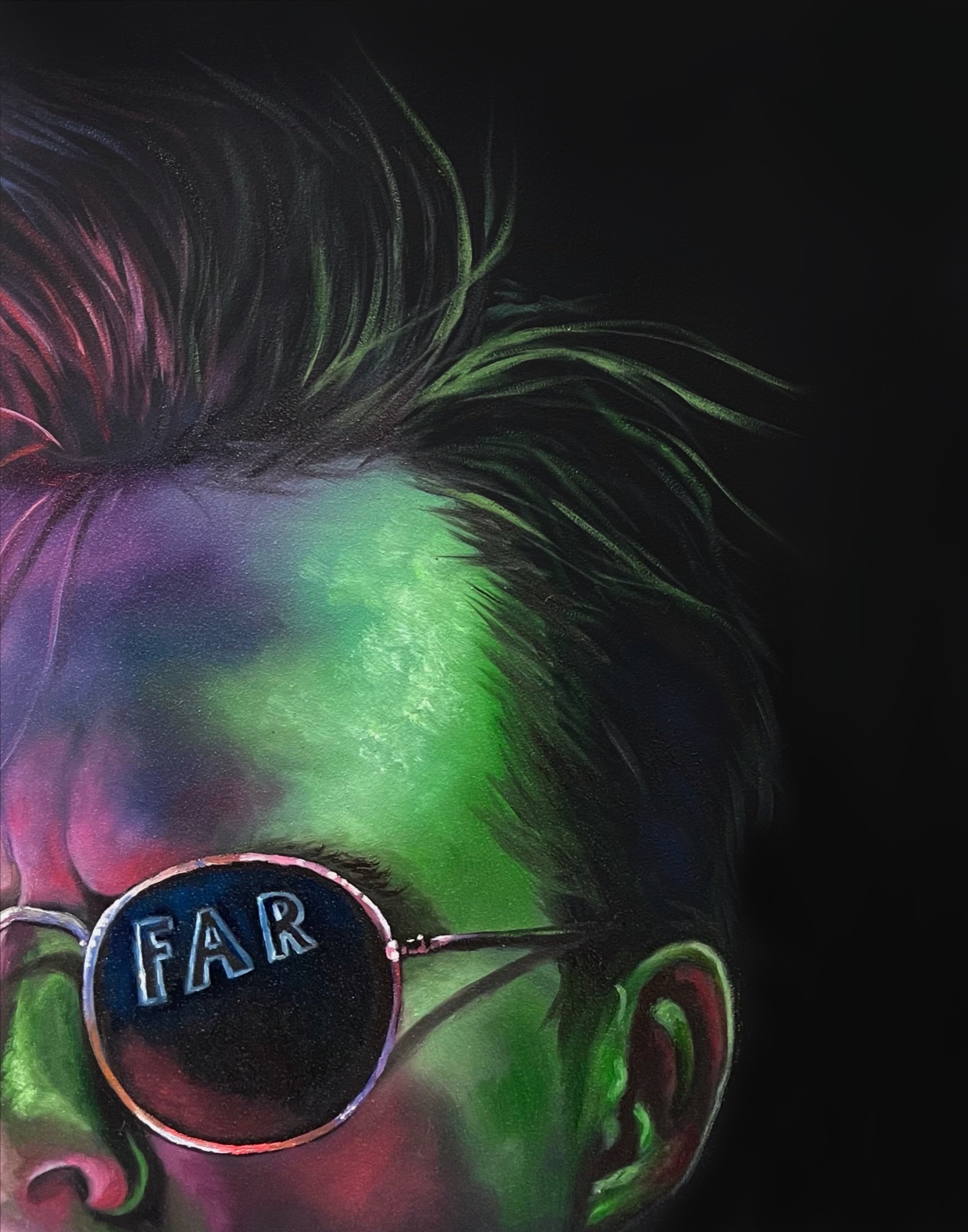
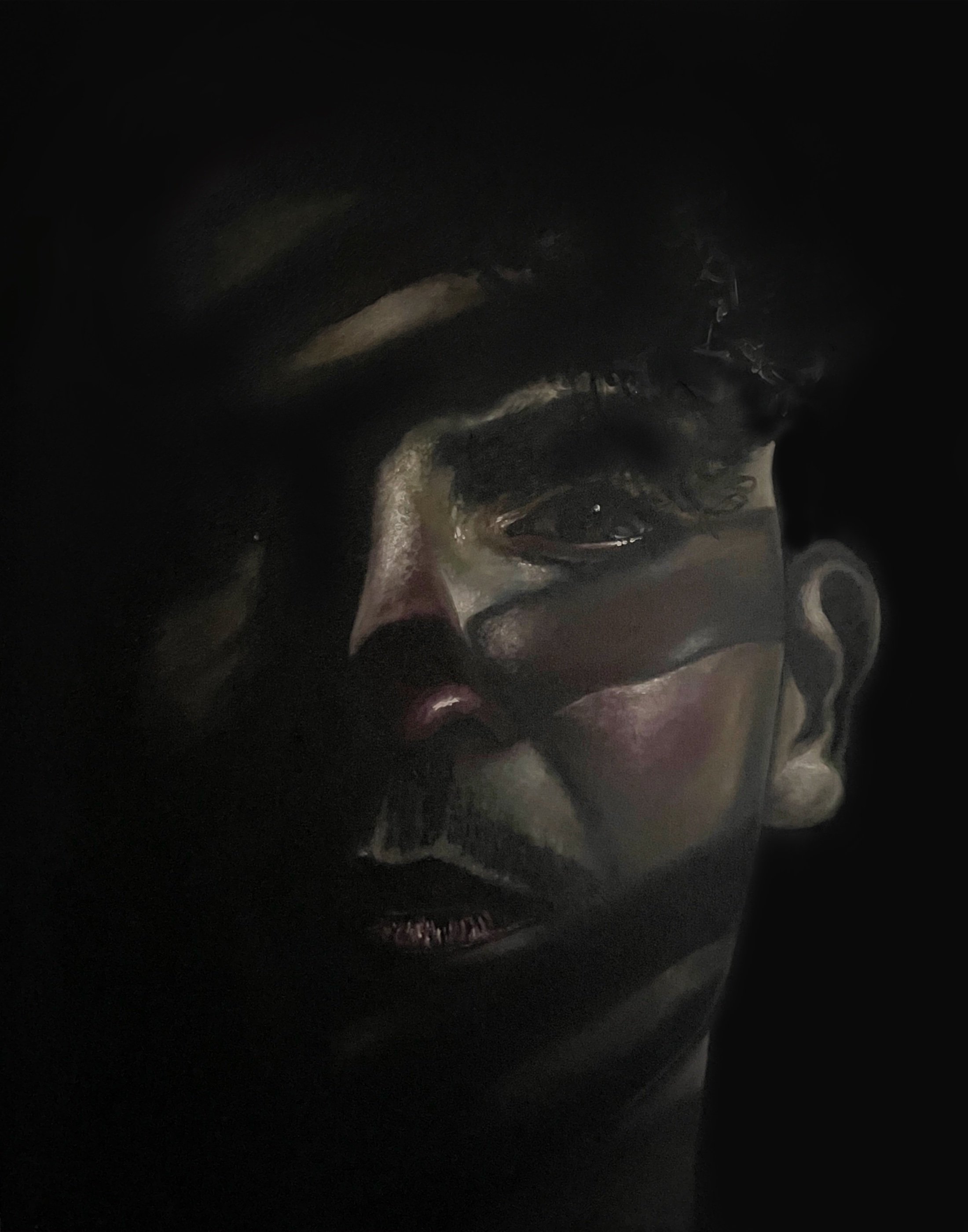
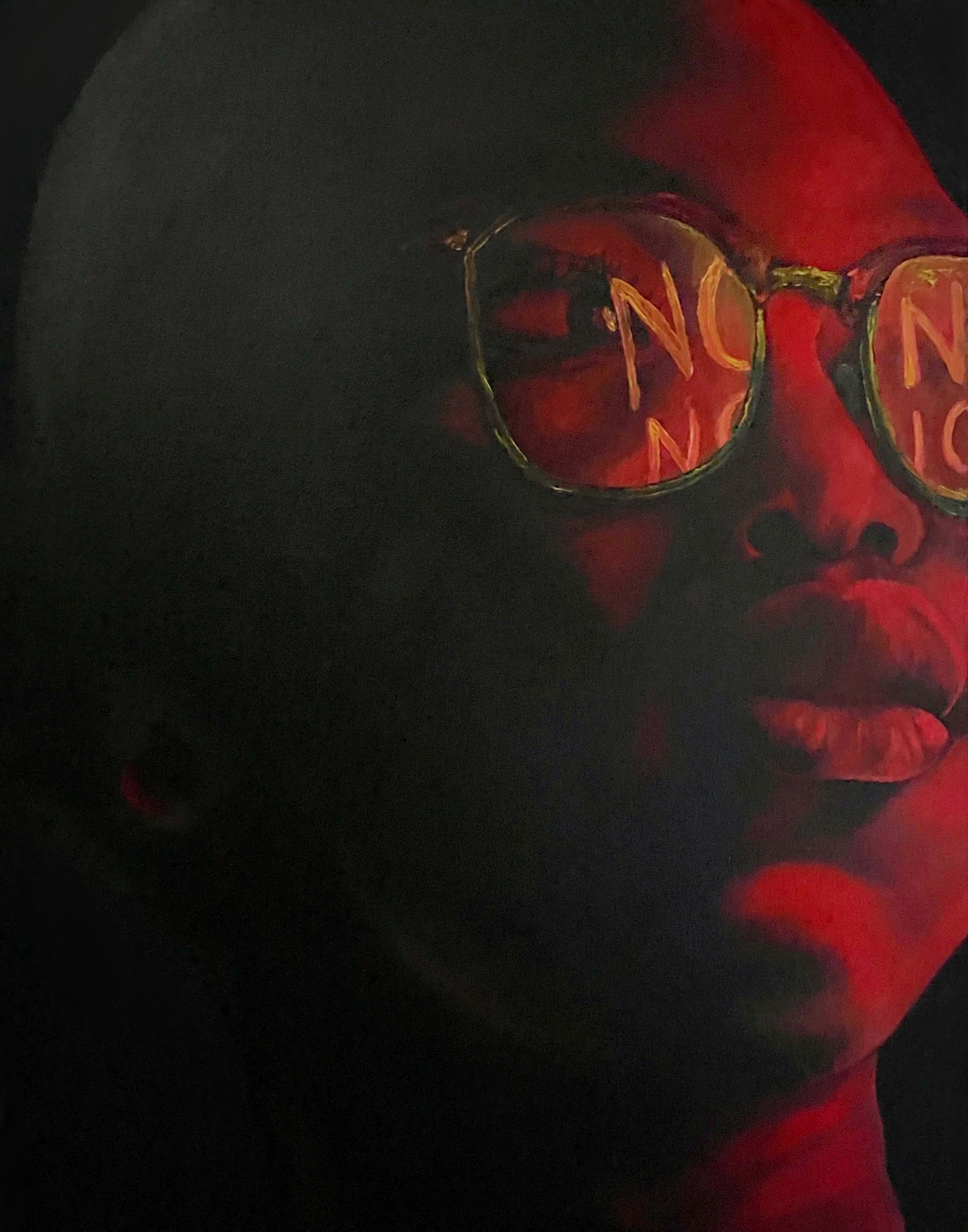
AAS: You have been incorporating Augmented Reality into your exhibitions. Is that area you plan to experiment more in?
MH: My fascination with incorporating Augmented Reality into my paintings began during my studies for my BFA. The concept of creating artworks that could transform and come to life when viewed through a device's camera truly intrigued me. This led to the inception of a series titled Dichotomy, where I depicted two southern icons, the Houston Cole Library and the City Federal buildings, initially isolated from their surroundings. The process unfolded when these paintings were viewed through a phone or tablet's camera, revealing the environments that were integral to shaping the essence of these buildings. It was a captivating experience for both the artist and the observer, as the digital and physical realms blended seamlessly.
While technology undoubtedly offers exciting possibilities, I hope that societies will rediscover a longing for the authenticity and essence of creations made by skilled artisans. As an artist and designer, I see myself playing a role in preserving the essence of human touch in my works, balancing the allure of technology with the depth of craftsmanship.
AAS: Mason, what are the latest happenings at Art Ventures NWA and what are your responsibilities as a curator there?
MH: As the Curatorial Associate at Art Ventures, my primary responsibility revolves around the exhibition process, where our main focus is to elevate artists and provide them with a platform to showcase their work. At the moment, I am deeply engaged in promoting "Natural Geometries," an exhibition which features AV* Represented Artist Martín Morales.
I am actively involved in the curation of six different sites across NWA. Although I am unable to disclose all the details of our upcoming exhibitions at this time, I can share that audiences can look forward to two more exhibitions at Putman House, two more at the Fayetteville Chamber of Commerce, a new exhibition at Startup Junkie, and fresh exhibitions at TheatreSquared and the UARK Performing Arts Center. We are currently finalizing the dates for these exhibitions, so I encourage everyone to follow us on social media for timely updates.
In addition, Art Ventures is proudly hosting its inaugural Art Ventures Ventura Awards, a significant event aimed at recognizing and honoring artists from all corners of NWA. With five artists set to be awarded, the nomination process will commence on August 1, 2023 at www.artventures-nwa.org, and the awards ceremony is scheduled for November 12, from 12:30 to 2:00 pm. It is important to highlight that all proceeds from this event will be dedicated to sustaining the three pillars that form the foundation of Art Ventures: Art Education, Artist Representation, and Community Collaboration.
I take great pride in being part of an organization that is deeply committed to promoting art and artists within our community. Working alongside a passionate and dedicated team, we strive to provide art enthusiasts and the community at large with enriching experiences through our exhibitions and events. We firmly believe that art has the power to bring people together, transcend boundaries, and foster a sense of creativity and connection. Our mission remains steadfast in supporting artists and enhancing the artistic landscape in Northwest Arkansas, and I am honored to contribute to this vibrant tapestry of creativity at Art Ventures.
